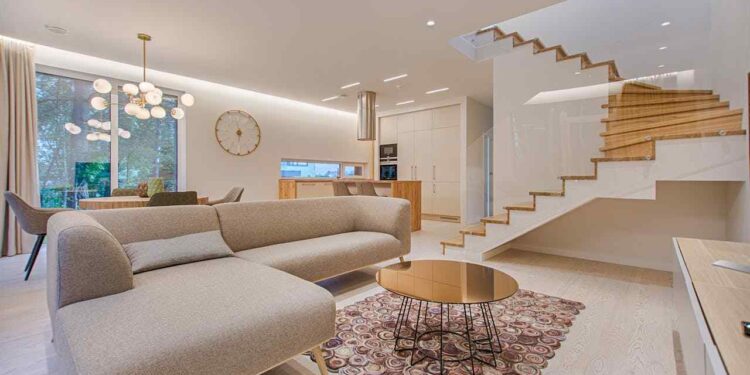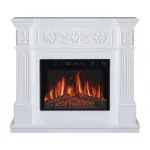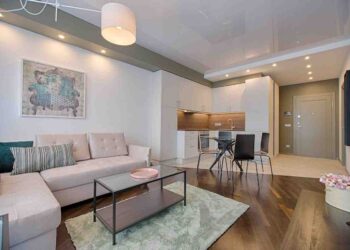How many interior design styles are there? It’s a question that sounds simple—until you start flipping through magazines, scrolling Pinterest boards, or walking into a perfectly styled room that feels nothing like your own space. For homeowners, renters, and designers alike, nailing down a style is more than a matter of taste. It’s about creating a space that reflects personality, supports daily life, and feels cohesive from the sofa cushions to the light fixtures.
How Many Interior Design Styles Are There?
Across the design world, experts recognize anywhere from 26 to 32 distinct interior design styles. Each comes with its own history, character, and aesthetic language, shaped by cultural traditions, architectural movements, or lifestyle philosophies. Some are crisp and modern, others lush and traditional, and many exist somewhere in between.
In this guide, we’re going to break them down clearly and practically. By the end, you’ll be able to pinpoint which styles speak to you—and even learn how to blend them to create a space that’s unmistakably yours.
The Big Picture of Interior Design Styles
An interior design style is more than just a “look.” It’s the sum of influences, materials, color palettes, and cultural roots that give a space its unique personality. The clean lines of Modern design, for example, reflect the industrial era’s embrace of function over ornament. The airy whites and natural textures of Coastal style speak to a love for ocean vistas and casual living.
Every style has its building blocks—signature materials like marble or reclaimed wood, favored color schemes from muted earth tones to jewel-bright hues, and design philosophies that shape how a space feels and functions. These elements often come from deep cultural histories or specific moments in design evolution.
And here’s the beauty of modern interiors: styles are no longer locked into rigid categories. Today’s homes frequently mix Scandinavian minimalism with Bohemian warmth, or pair Mid-Century Modern lines with Industrial accents. This blending reflects the way we live now—global, eclectic, and deeply personal.
Core Categories of Interior Design Styles
When it comes to transforming a space, understanding the core categories of interior design styles is the first step toward creating a home that truly reflects your personality. From sleek, modern minimalism to cozy, rustic charm, each style carries its own distinct mood, materials, and visual language. By exploring these categories, you’ll gain a clearer sense of what resonates with you—and how to bring it to life in your own rooms.
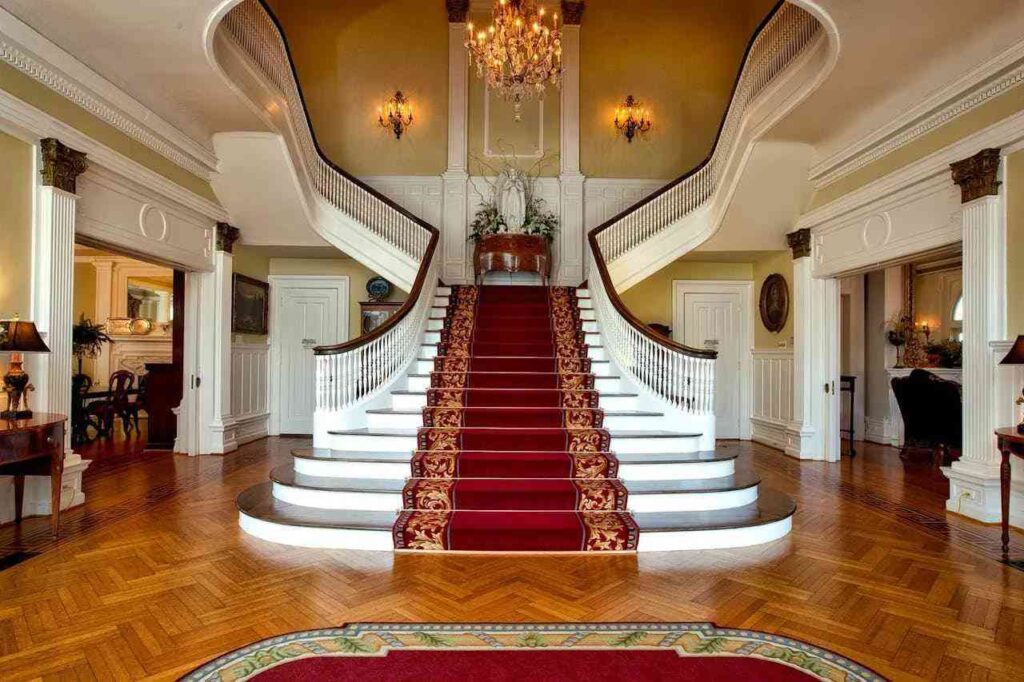
Modern & Contemporary Interior Design Styles
This family of styles shares a focus on clean lines, functional spaces, and a streamlined aesthetic. While each has its own nuances, they all prioritize clarity and simplicity over excessive ornamentation. They’re popular with people who want a calm, uncluttered backdrop for daily life.
1. Modern
Rooted in the early to mid-20th century, Modern design emphasizes function, balance, and honesty in materials. Think open layouts, strong horizontal and vertical lines, and a restrained color palette. Furniture tends to be low-profile with smooth surfaces and little to no decorative flourishes.
2. Contemporary
Often confused with Modern, Contemporary is about what’s trending right now—so it evolves. Currently, it leans toward soft minimalism, sustainable materials, and gentle curves rather than the rigid geometry of classic Modernism. It’s fluid, adaptable, and willing to borrow elements from other styles.
3. Minimalist
Minimalism strips design to its bare essentials—functional furniture, clean lines, and neutral colors. The mantra here is “less but better.” This style is about reducing visual noise so each element has space to breathe. Natural light and open space play as important a role as the furnishings themselves.
Famous for its “hygge” (coziness) factor, Scandinavian design blends Minimalism with warmth. Pale woods, light color palettes, and simple, functional furniture make spaces feel bright and airy. Textiles like wool throws or linen curtains add softness without clutter.
5. Japandi
A hybrid of Japanese and Scandinavian design, Japandi emphasizes simplicity, craftsmanship, and a deep connection to nature. It combines the warm minimalism of Scandi interiors with the wabi-sabi philosophy of Japan, embracing imperfections and organic textures.
6. Organic Modern
This style keeps the clean forms of Modern design but softens them with natural materials and earthy tones. Think white walls paired with warm wood, stone accents, and tactile fabrics. The aim is to create spaces that feel both sleek and grounded.
7. Urban Modern
Urban Modern design has a sleek, cosmopolitan edge, borrowing the clean lines of Modernism and mixing them with Industrial and eclectic elements. Neutral tones dominate, but bold art, statement lighting, and metal finishes add personality. Perfect for city apartments and lofts.
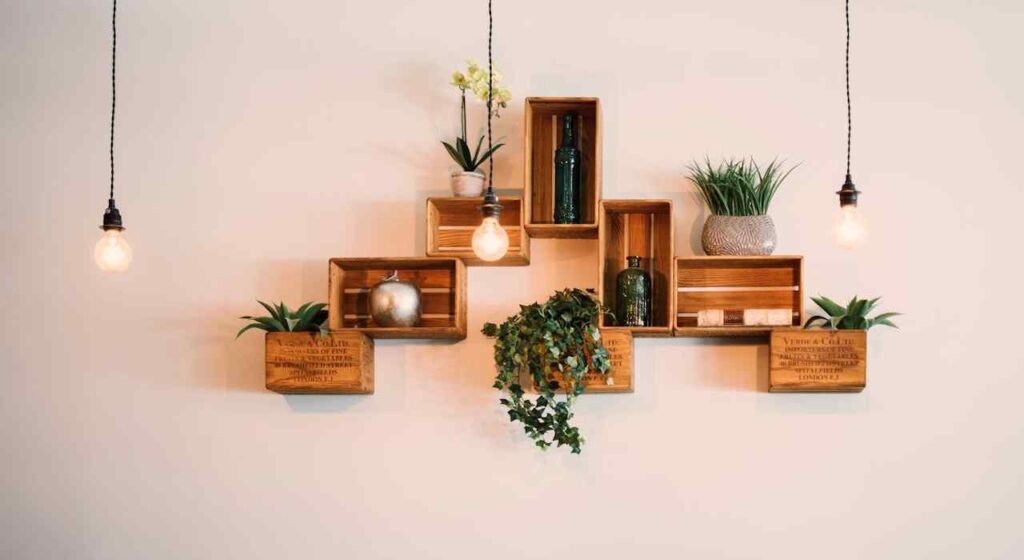
Classic & Traditional Interior Design Styles
1. Traditional
Timeless and elegant, Traditional design draws heavily from 18th- and 19th-century European interiors. It features dark woods, rich fabrics like velvet or damask, and symmetrical layouts. Decorative molding, carved details, and antique-inspired furnishings are hallmarks, giving spaces a sense of formality and refinement.
2. Southern Traditional
A warm, gracious take on Traditional design, Southern Traditional often incorporates lighter color palettes, heirloom pieces, and a blend of indoor–outdoor living. Think generous porches, patterned fabrics, and a mix of classic furniture with a touch of hospitality-driven charm.
3. Regency
Luxurious and theatrical, Regency style embraces opulence through gilded finishes, exotic woods, and intricate patterns. Inspired by early 19th-century English design, it often features high-contrast colors, rich textiles, and statement lighting for maximum visual drama.
4. Transitional
A bridge between Traditional and Contemporary styles, Transitional design keeps the classic shapes and balanced layouts of Traditional interiors but uses a softer, more neutral color palette and streamlined furnishings. It’s ideal for those who want elegance without formality.
5. Country
Country style celebrates rural charm with warm colors, rustic wood finishes, and casual, welcoming furniture. It often includes handmade or vintage elements, floral prints, and natural textures, creating a space that feels relaxed and homey.
6. Mediterranean
Inspired by coastal regions of Spain, Italy, and Greece, Mediterranean interiors feature warm earth tones, stucco or textured walls, and wrought-iron details. Arched doorways, terracotta floors, and abundant natural light help evoke the breezy, sun-soaked vibe of the region.
7. Alpine Chic
A blend of rustic mountain style and understated elegance, Alpine Chic uses raw wood beams, stone fireplaces, and cozy textiles like fur or wool. Neutral palettes with natural accents create an inviting retreat that feels both sophisticated and snug.
Artistic & Eclectic Approaches to Interior Designs
1. Bohemian (Boho)
Vibrant, layered, and free-spirited, Boho design mixes patterns, colors, and cultural influences with ease. Plants, handcrafted items, and vintage finds come together to create spaces that feel personal and alive. There’s no strict rule—comfort and creativity lead the way.
2. Eclectic
Eclectic interiors intentionally mix elements from different periods and styles, creating a curated yet relaxed feel. The key is balance: contrasting textures, colors, and shapes are unified by a thoughtful selection of anchor pieces or repeating motifs.
3. Maximalist
The opposite of Minimalism, Maximalist design embraces “more is more.” Bold colors, layered patterns, and an abundance of art, textiles, and decorative objects create a rich, expressive environment that tells a visual story.
4. Memphis
Born in the 1980s, Memphis style is playful and unconventional, featuring bright colors, geometric shapes, and unexpected material pairings. It rejects subtlety in favor of bold, often whimsical statements.
5. Hollywood Glam
Also known as Hollywood Regency, this style is all about luxury and drama. Shiny surfaces, plush fabrics, mirrors, and metallics set the stage, while bold colors or black-and-white contrasts add theatrical flair. It’s designed to make a statement the moment you walk in.
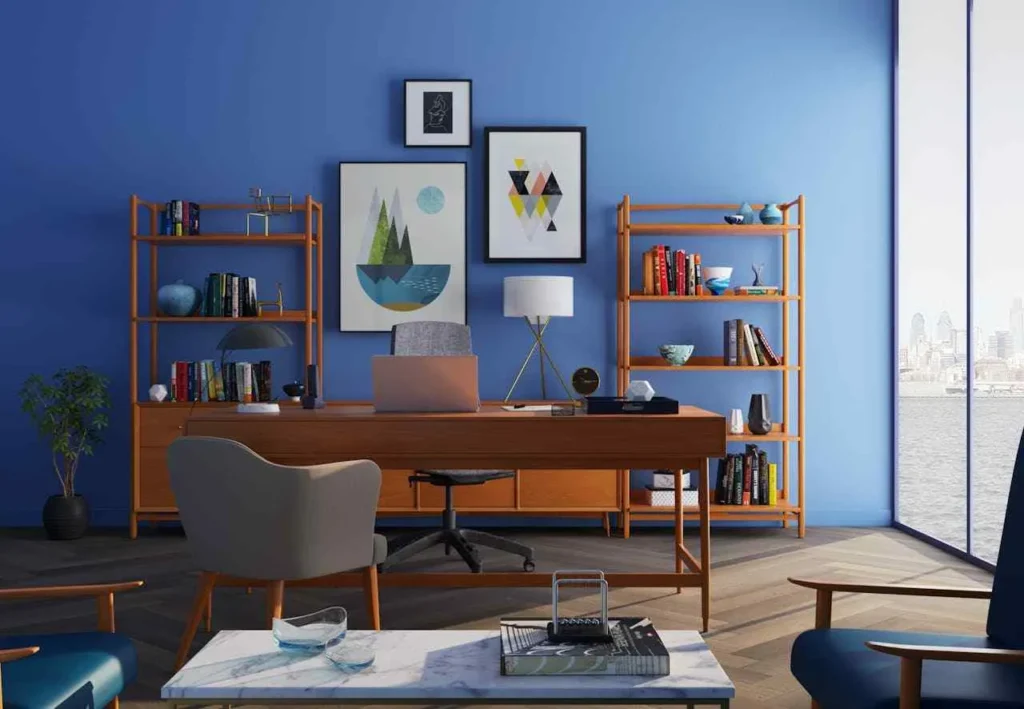
Historic & Retro Influences Of Interior Designs
1. Art Deco
Emerging in the 1920s and 1930s, Art Deco celebrates bold geometry, symmetry, and lavish materials. Expect sleek lines, stylized motifs, and rich finishes like marble, brass, and lacquer. This style often uses dramatic lighting and mirrored surfaces to enhance its glamorous appeal.
2. Mid-Century Modern
From the 1940s to the 1960s, Mid-Century Modern design emphasized organic shapes, minimal ornamentation, and functional forms. Furniture with tapered legs, open layouts, and natural materials like wood and leather are staples, often paired with bright accent colors.
3. Art Moderne
Also known as Streamline Moderne, this 1930s style draws from industrial design and aerodynamics. Curved forms, chrome accents, and smooth, horizontal lines define the look. It’s more fluid and minimalist than Art Deco, with an emphasis on sleek efficiency.
4. Neo-Industrial
A modern evolution of classic Industrial design, Neo-Industrial incorporates raw elements like exposed brick, steel beams, and reclaimed wood but softens them with contemporary finishes, warmer lighting, and curated décor. Perfect for lofts or open-plan spaces.
5. Shabby Chic
Shabby Chic embraces a romantic, vintage aesthetic with distressed furniture, pastel colors, and floral fabrics. Soft textures and antique-style accessories give the style its charm, offering a relaxed, feminine take on traditional décor.
Culturally Inspired Interior Design Styles
1. Asian Décor
Drawing from various Asian traditions, this style often blends minimalism with nature-focused elements. Materials like bamboo, rice paper, and stone are common, alongside features like low-profile furniture and indoor water elements for a serene, grounded atmosphere.
2. Feng Shui
More a design philosophy than a visual style, Feng Shui is rooted in ancient Chinese principles of spatial harmony. Placement of furniture, use of natural light, and thoughtful color choices are all intended to balance energy and promote well-being.
3. Biophilic
Biophilic design strengthens the connection between humans and nature. Expect abundant plants, natural textures, flowing water features, and large windows that flood interiors with daylight. It’s as much about wellness as it is about aesthetics.
4. Coastal & California Coastal
Coastal design channels a breezy, beach-inspired feel with airy palettes, nautical accents, and organic textures like linen and driftwood. California Coastal adds a West Coast twist—more relaxed, with sun-washed tones and an emphasis on indoor-outdoor living.
5. Rustic
Rooted in rural living, Rustic style focuses on raw, natural materials like rough-hewn wood, stone, and iron. Furniture is sturdy and functional, often handmade, and the palette is warm and earthy, creating a cozy, unpretentious atmosphere.
6. Modern Farmhouse
Modern Farmhouse blends rustic charm with contemporary refinement. Shiplap walls, barn doors, and reclaimed wood pair with neutral tones, sleek lighting, and modern furniture to create spaces that feel both inviting and up to date.
How to Identify Your Preferred Style
Choosing your interior design style isn’t about memorizing definitions—it’s about understanding what makes you feel at home. The right style should reflect your personality, lifestyle, and even your daily routines.
Questions to Ask Yourself
Before you commit to a look, ask yourself:
- Space Usage: Do you prefer open, airy layouts, or do you feel cozier in rooms with defined, separate zones?
- Color Preferences: Are you drawn to neutrals and muted tones, or do bold colors energize you?
- Emotional Vibe: Do you want your home to feel calm and serene, lively and vibrant, or warm and traditional?
- Lifestyle Fit: Do you entertain often? Need kid- or pet-friendly furnishings? Love collecting art?
Spotting Your Style Cues
Start paying attention to the design elements you gravitate toward in furniture stores, magazines, or Pinterest boards. Notice:
- Furniture Shapes: Curved edges feel more classic or romantic, while straight, clean lines lean modern.
- Materials: Natural wood, stone, and linen often point to rustic or organic styles, while metals, glass, and lacquer feel more contemporary.
- Patterns & Textures: Bold prints suggest eclectic or maximalist tastes, while solid tones or subtle patterns fit minimalist or Scandinavian sensibilities.
- Layout & Proportion: Oversized furniture in cozy arrangements suggests traditional styles, whereas low-profile furniture in open spaces often reads as modern.
Mixing and Matching Interior Design Styles
Not everyone fits neatly into one design box—and that’s a good thing. Mixing styles can create a home that feels layered, personal, and timeless. The key is to combine them with intention so your space feels cohesive, not chaotic.
Blending Without Visual Overload
- Choose a Dominant Style: Let one style set the tone for 60–70% of the room, and use the other style for accents.
- Unify Through Color: Even contrasting styles can harmonize if they share a similar palette.
- Repeat Elements: If you mix materials or patterns, repeat them in multiple areas of the room so nothing feels out of place.
- Balance Proportions: Avoid pairing overly bulky furniture with delicate pieces unless it’s a deliberate focal point.
Popular Style Combinations That Work
- Scandinavian + Boho: Clean, airy base with earthy textures, layered rugs, and handmade accents for warmth.
- Industrial + Mid-Century Modern: Raw brick walls and metal finishes softened by organic wood furniture and retro-inspired shapes.
- Minimalist + Japandi: Sleek, clutter-free spaces with natural textures and calming, neutral tones.
- Modern Farmhouse + Coastal: Rustic wood features paired with breezy blues, whites, and nautical accents.
- Art Deco + Hollywood Glam: Bold geometry and rich finishes merged with plush fabrics and statement lighting for a luxe look.
Here’s the final set of sections so your interior design guide closes strong and gives readers clear, actionable next steps.
Practical Steps to Implement Your Style
Knowing your style is only half the battle—making it a reality is where the fun (and sometimes the challenge) begins.
Room-by-Room Application Ideas
- Living Room: Start with your anchor pieces—sofa, coffee table, and area rug—then build the look with lighting, wall art, and accent chairs that match your style.
- Bedroom: Focus on the bed frame, bedding textures, and nightstands. Soft lighting and carefully chosen wall décor can transform the mood instantly.
- Kitchen: Swap cabinet hardware, change out light fixtures, or add open shelving for a quick style shift without a full remodel.
- Bathroom: Towels, mirrors, and light fixtures offer inexpensive but high-impact updates. Even the color of your bath mat can push a space toward modern, coastal, or rustic.
- Entryway: A console table, statement mirror, or patterned rug can make the first impression match your design vision.
Budget-Friendly Ways to Achieve the Look
- Thrift & Vintage Finds: Many styles—especially eclectic, mid-century, and rustic—benefit from unique secondhand pieces.
- DIY Projects: Painting walls, refinishing furniture, or even making your own art can save money and add a personal touch.
- Smart Swaps: Change smaller elements first—throw pillows, curtains, lampshades—before investing in major furniture.
- Layer Gradually: Buy quality pieces over time rather than rushing to fill a room. This prevents mismatched purchases and spreads out costs.
- Repurpose What You Have: Sometimes, moving furniture to a different room or repainting it is enough to fit your new style.
Conclusion
When you first started reading, you might have been wondering: How many interior design styles are there? Now you have the tools to answer that with confidence. You’ve explored the major style families—from sleek modern lines to warm traditional spaces, from culturally inspired designs to eclectic mashups. You’ve learned how to spot what draws your eye, mix styles without making a mess, and translate those preferences into real-world rooms.
The truth is, your style is never set in stone. It can evolve as your life changes—just like your wardrobe or your favorite music. What matters most is creating spaces that make you feel comfortable, inspired, and genuinely at home.
So explore. Experiment. Play with color swatches, rearrange furniture, or hang that piece of art you’ve been saving. Your home is your canvas—fill it with choices that reflect you. In the end, the best style isn’t the one that’s trending or perfectly “by the book.” It’s the one that makes you smile when you walk through the door.
Interior Design Style Comparison Chart
A quick-reference chart helps readers instantly compare key elements of each design style without rereading full descriptions.
| Style | Key Characteristics | Color Palette | Typical Materials | Vibe |
|---|---|---|---|---|
| Modern | Clean lines, minimal ornamentation | Neutrals, black, white | Metal, glass, wood | Sleek, functional |
| Scandinavian | Light-filled, functional comfort | Soft neutrals, pastels | Light woods, natural fabrics | Cozy, airy |
| Bohemian | Layered textures, global influence | Jewel tones, earthy shades | Rattan, textiles, mixed patterns | Relaxed, creative |
| Mid-Century Modern | Retro simplicity, organic shapes | Mustard, teal, walnut | Teak, molded plastic, brass | Timeless, retro-cool |
| Traditional | Symmetry, formal furniture | Warm neutrals, rich tones | Mahogany, silk, leather | Elegant, classic |
| Industrial | Exposed structures, utilitarian | Grays, browns, blacks | Brick, steel, reclaimed wood | Raw, urban |
| Coastal | Light, breezy, beach-inspired | White, blue, sandy beige | Linen, driftwood, wicker | Relaxed, fresh |
FAQs
1. How many interior design styles are there in total?
While the exact number can vary depending on how experts define and group them, most design professionals recognize between 26 and 32 distinct interior design styles. This includes both historical styles and modern variations.
2. Why does the number of styles vary between sources?
The count changes because styles often overlap, evolve, or branch into sub-styles. For example, “modern” can encompass mid-century modern, organic modern, and urban modern—each distinct yet related.
3. Are new interior design styles still being created?
Yes. As cultural trends, technology, and lifestyles evolve, new styles emerge or hybrid styles become popular, such as Japandi (a blend of Japanese and Scandinavian design).
4. Do I need to stick to just one interior design style in my home?
Not at all. Many people blend multiple styles to create a personalized look, as long as the mix feels intentional and visually cohesive.
5. What’s the best way to figure out my preferred interior design style?
Explore different style definitions, collect inspiration images, and pay attention to the colors, materials, and layouts that make you feel comfortable and inspired.
More Interesting Posts
- How to Stay Warm Without Turning Up the Heat
- Easy Ways to Update Your Home for Fall or Autumn
- 11 Tips to Make Your Yard Look Nice This Autumn
Today’s Bargain
Toscana Electric Fireplace – £679.00
An electric fireplace enhances any room’s style while adding warmth and ambiance, fitting effortlessly into modern or traditional interiors. It offers the charm of a real fire without installation hassles, venting, or the mess, creating a cozy, low-maintenance focal point for your home.
The Haley Bed With Savoir Mattress ( Emperor Size) – £10,990.00
The Haley Bed with Savoir Emperor mattress combines elegant design with exceptional comfort, enhancing a bedroom’s style while solving the problem of choosing between aesthetics and quality sleep.


